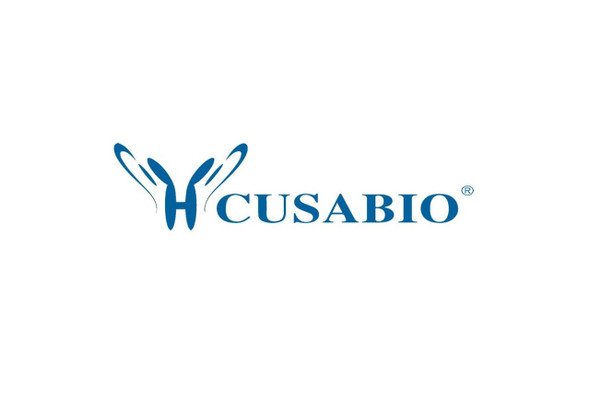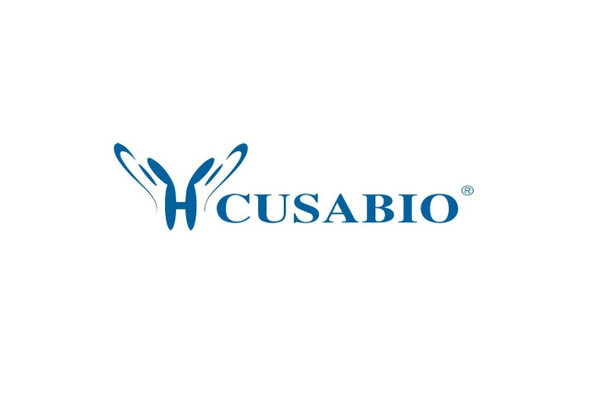Cusabio Human Recombinants
Recombinant Human Filaggrin (FLG) , partial | CSB-BP008712HU
- SKU:
- CSB-BP008712HU
- Availability:
- 28 - 38 Working Days
Description
Recombinant Human Filaggrin (FLG) , partial | CSB-BP008712HU | Cusabio
Alternative Name(s): ATOD2; Epidermal filaggrin; FILA_HUMAN; Filaggrin; Filaggrin precursor; Fillagrin; FLG; Profilaggrin
Gene Names: FLG
Research Areas: Signal Transduction
Organism: Homo sapiens (Human)
AA Sequence: DSSRHSQSGQGESAGSRRSRRQGSSVSQDSDSEAYPEDSERRSESASRNHHGSSREQSRDGSRHPGSSHRDTASHVQSSPVQSDSSTAKEHGHFSSLSQDSAYHSGIQSRGSPHSSSSYHYQSEGTERQKGQSGLVWRHGSYGSADYDYGESGFRHSQHGSVSYNSNPVVFKERSDICKASAFGKDHPRYYATYINKDPGLCGHSSDISKQLGFSQSQRYYYYE
Source: Baculovirus
Tag Info: N-terminal 6xHis-tagged
Expression Region: 3838-4061aa
Sequence Info: Partial
MW: 26.8 kDa
Purity: Greater than 90% as determined by SDS-PAGE.
Relevance: Aggregates keratin intermediate filaments and promotes disulfide-bond formation among the intermediate filaments during terminal differentiation of mammalian epidermis.
Reference: The DNA sequence and biological annotation of human chromosome 1.Gregory S.G., Barlow K.F., McLay K.E., Kaul R., Swarbreck D., Dunham A., Scott C.E., Howe K.L., Woodfine K., Spencer C.C.A., Jones M.C., Gillson C., Searle S., Zhou Y., Kokocinski F., McDonald L., Evans R., Phillips K. Bentley D.R.Nature 441:315-321(2006)
Storage: The shelf life is related to many factors, storage state, buffer ingredients, storage temperature and the stability of the protein itself. Generally, the shelf life of liquid form is 6 months at -20?/-80?. The shelf life of lyophilized form is 12 months at -20?/-80?.
Notes: Repeated freezing and thawing is not recommended. Store working aliquots at 4? for up to one week.
Function: Aggregates keratin intermediate filaments and promotes disulfide-bond formation among the intermediate filaments during terminal differentiation of mammalian epidermis.
Involvement in disease: Ichthyosis vulgaris (VI); Dermatitis atopic 2 (ATOD2)
Subcellular Location: Cytoplasmic granule
Protein Families: S100-fused protein family
Tissue Specificity: Expressed in skin, thymus, stomach, tonsils, testis, placenta, kidney, pancreas, mammary gland, bladder, thyroid, salivary gland and trachea, but not detected in heart, brain, liver, lung, bone marrow, small intestine, spleen, prostate, colon, or adrenal gland (PubMed:19384417). In the skin, mainly expressed in stratum granulosum of the epidermis (PubMed:1429717) (PubMed:19384417).
Paythway:
Form: Liquid or Lyophilized powder
Buffer: If the delivery form is liquid, the default storage buffer is Tris/PBS-based buffer, 5%-50% glycerol. If the delivery form is lyophilized powder, the buffer before lyophilization is Tris/PBS-based buffer, 6% Trehalose, pH 8.0.
Reconstitution: We recommend that this vial be briefly centrifuged prior to opening to bring the contents to the bottom. Please reconstitute protein in deionized sterile water to a concentration of 0.1-1.0 mg/mL.We recommend to add 5-50% of glycerol (final concentration) and aliquot for long-term storage at -20?/-80?. Our default final concentration of glycerol is 50%. Customers could use it as reference.
Uniprot ID: P20930
HGNC Database Link: HGNC
UniGene Database Link: UniGene
KEGG Database Link: KEGG
STRING Database Link: STRING
OMIM Database Link: OMIM









